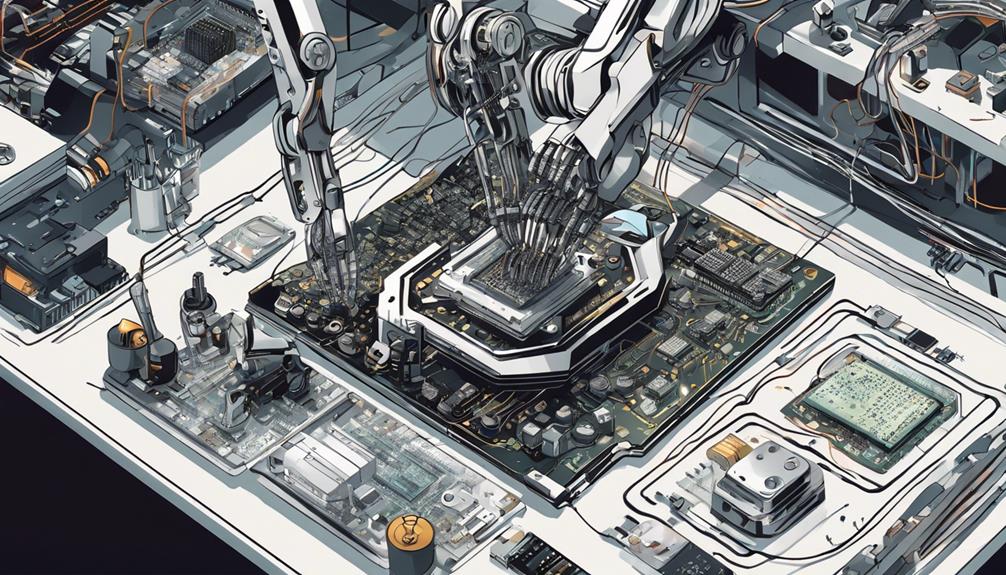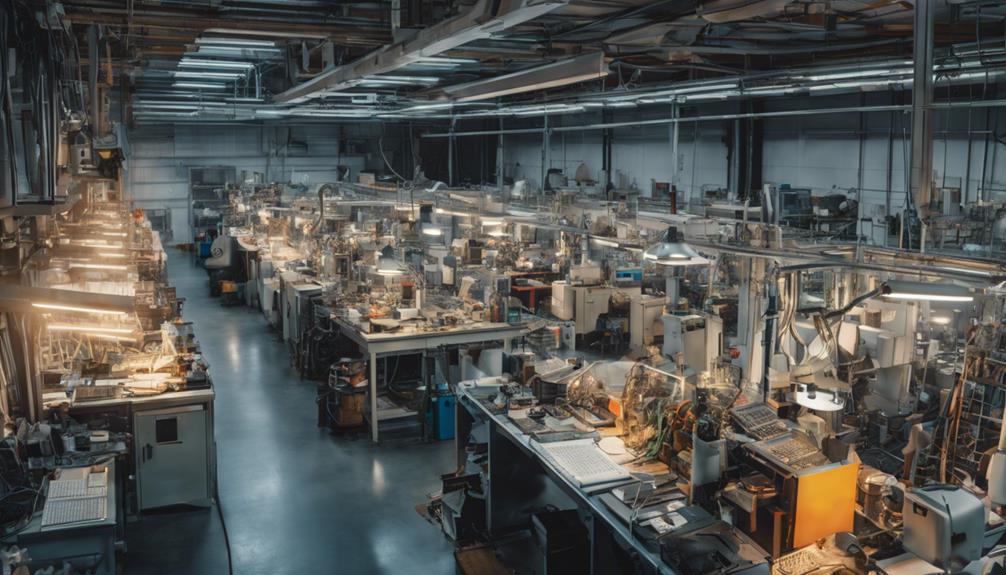Surface mount assembly offers several benefits that improve the electronics manufacturing process. It enables increased component density, allowing for smaller and more functional devices. Faster assembly and production are achieved through automation, reducing labor costs and streamlining the manufacturing process. In addition, surface mount assembly improves electrical performance, enhancing reliability and quality while reducing the risk of component damage. Moreover, it enables compact PCB design, optimizes supply chain management, and offers cost-effective component sourcing. By adopting surface mount assembly, manufacturers can greatly enhance their production capabilities, and exploring these advantages further can reveal even more opportunities for improvement.
Key Takeaways
- Surface mount assembly increases component density, enabling smaller, more functional electronic devices with maximized space efficiency on PCBs.
- Faster assembly and production are facilitated through automated pick & place machines, streamlining the manufacturing process and reducing turnaround times.
- Labor costs are substantially reduced through minimized manual intervention, automated assembly, and accurate component placement.
- Surface mount assembly improves electrical performance due to compact design, shorter signal paths, and precise component placement, resulting in faster signal propagation and lower EMI.
- Enhanced reliability and quality are achieved through reduced risk of component damage, precise soldering, and improved durability, leading to higher quality electronic devices.
Increased Component Density
Moreover, surface mount technology (SMT) enables the creation of smaller, yet more functional electronic devices. By allowing for higher component density on a printed circuit board (PCB), SMT enables the development of compact, high-performance electronic devices.
Unlike through-hole technology, SMT components are mounted directly onto the surface of the board, maximizing space efficiency. This increased density enables smaller, lighter electronic devices with more functionality, making them ideal for a wide range of applications.
Moreover, SMT components can be placed closer together, reducing signal path lengths and improving electrical performance. The ability to pack more components in a smaller space is a key advantage of surface mount assembly, making it an essential technology for modern electronics.
Faster Assembly and Production
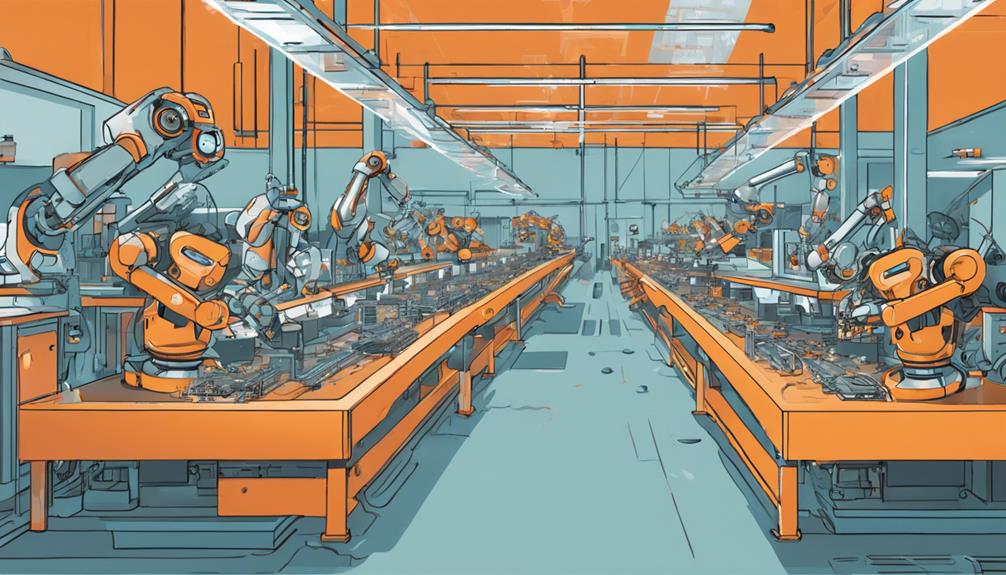
In addition to enabling increased component density, surface mount technology also facilitates faster assembly and production, thereby streamlining the entire manufacturing process.
This is due to the inherent advantages of surface mount assembly, which is notably faster than traditional through-hole assembly. Automated pick & place machines in surface mount assembly can place components with high precision at a rapid pace, reducing production time and increasing efficiency.
As a result, turnaround times for PCB manufacturing are quicker, meeting tight deadlines and increasing productivity. Moreover, surface mount technology allows for simultaneous soldering of multiple components, further speeding up the assembly process.
The cumulative effect of these advantages is a substantial improvement in production efficiency, leading to cost savings and competitive advantages in the electronics industry. By leveraging surface mount technology, manufacturers can optimize their production workflows, reduce lead times, and improve their bottom line.
Reduced Labor Costs
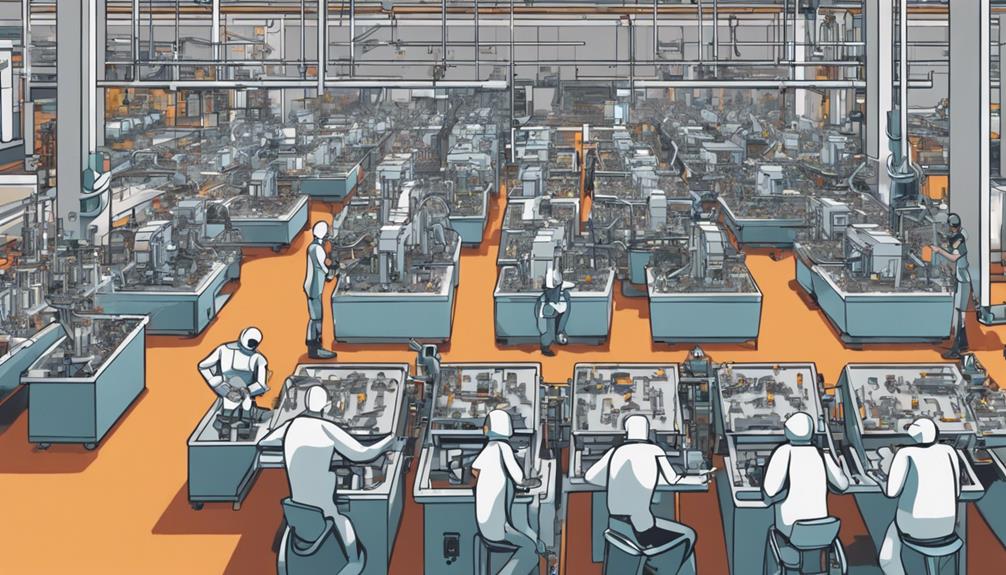
One of the most significant benefits of surface mount assembly is the substantial reduction in labor costs, which is achieved by minimizing the need for manual intervention in the assembly process. By leveraging automation and advanced technologies, surface mount technology reduces the labor required for assembly, leading to significant cost savings.
Some key advantages of surface mount assembly that contribute to reduced labor costs include:
- Elimination of manual insertion of through-hole components
- Faster assembly times through automation
- Accurate and rapid component placement by pick and place machines
- Minimized human intervention, reducing labor expenses
- Streamlined manufacturing process, resulting in a cost-effective solution for PCB assembly
Improved Electrical Performance
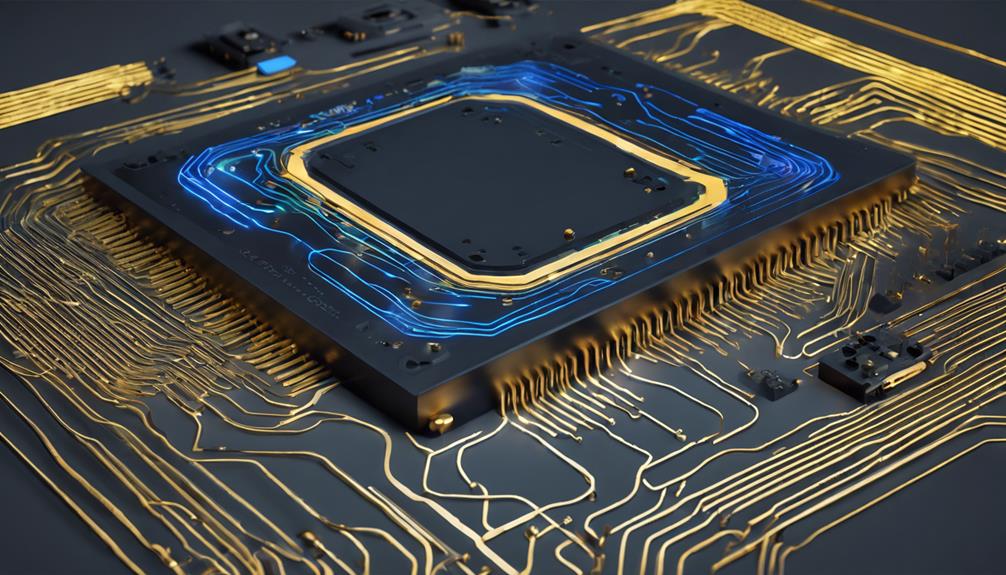
Surface mount technology's ability to reduce labor costs is complemented by its significant improvements to electrical performance, which are achieved through the unique characteristics of SMT components and the automated assembly process.
The compact design of SMT components allows for shorter signal paths, reducing electrical resistance and improving overall performance. By placing components closer together, SMT enables faster signal propagation and lower electromagnetic interference (EMI).
Additionally, SMT offers higher electrical performance compared to through-hole components due to reduced parasitic capacitance and inductance. The miniaturized design of SMT components enables compact designs with improved signal integrity and overall electrical efficiency.
Moreover, the automated assembly process in SMT ensures precise component placement, leading to consistent electrical performance across all boards. This results in improved signal quality, reduced noise, and enhanced overall system performance.
Enhanced Reliability and Quality
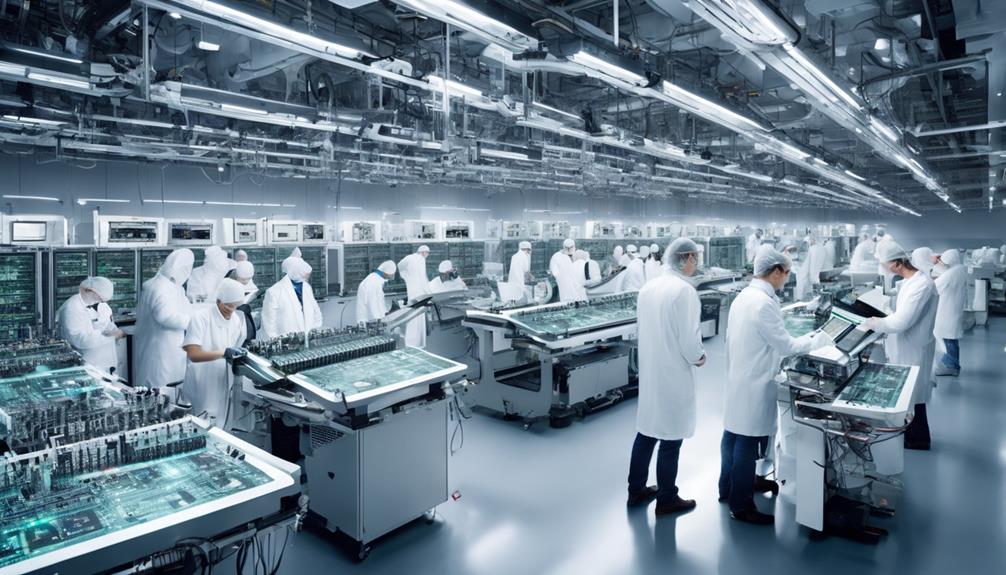
The compact design and precise assembly process of surface mount technology greatly reduce the risk of component damage, leading to enhanced reliability and quality of electronic devices. This is achieved through the precise placement of components on solder pads, ensuring strong connections that can withstand various environmental conditions.
The benefits of enhanced reliability and quality in surface mount assembly include:
- Improved durability and resistance to mechanical failures
- Higher quality connections through precise soldering processes
- Consistent quality achieved through automated assembly processes
- Enhanced overall performance and longevity of electronic devices
- Reduced risk of component damage during manufacturing services
Compact PCB Design Capability
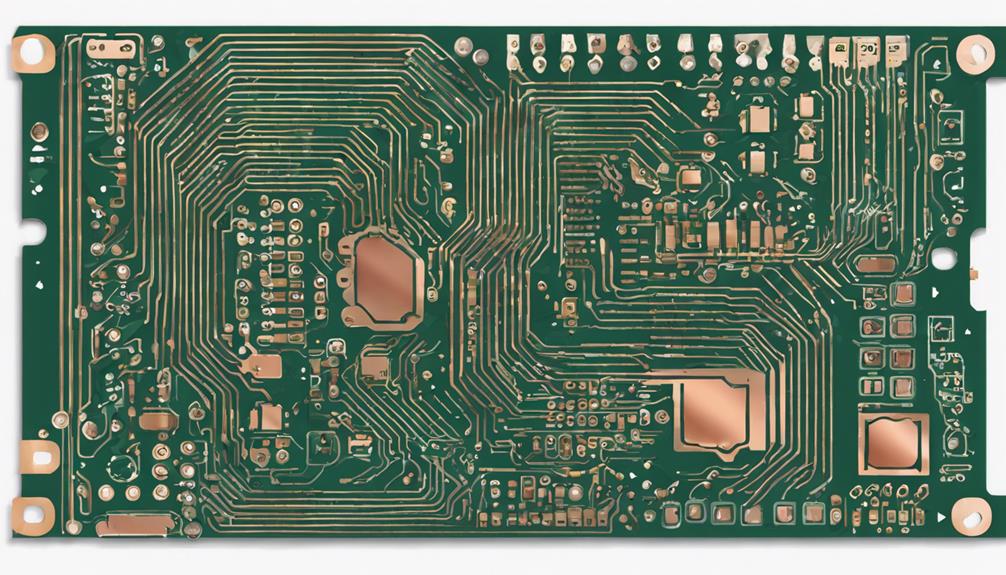
The compact PCB design capability of surface mount technology enables the creation of electronic devices with increased circuit density and reduced board size.
By facilitating the placement of components on both sides of the PCB and utilizing smaller SMT components, designers can achieve higher component density without sacrificing functionality.
This results in electronic devices that are not only smaller and lighter but also more portable and versatile.
Increased Circuit Density
Compact electronic designs are a hallmark of modern technology, and surface mount assembly's ability to increase circuit density has been instrumental in achieving this goal. By mounting components directly onto the surface of the board, surface mount technology (SMT) enables the creation of compact PCB designs with higher circuit density. This increased density allows for more components to be packed into a smaller space, resulting in improved performance and functionality of electronic devices.
The advantages of increased circuit density in surface mount assembly are numerous:
- Enables compact PCB designs with more components in a smaller space
- Reduces the need for holes, maximizing space efficiency
- Allows for the creation of smaller and lighter electronic devices
- Accommodates complex circuitry within a limited space
- Results in improved performance and functionality of electronic devices
Reduced Board Size
Moreover, one significant advantage of surface mount assembly is its ability to facilitate reduced board size, thereby enabling the creation of smaller, more portable electronic devices.
This compact PCB design capability is a direct result of surface mount technology (SMT), which allows for the placement of components on both sides of the PCB, maximizing the use of available space. In SMT manufacturing, components take up less space on the board, making it possible to assemble intricate and space-efficient electronic devices.
The reduced board size achieved through SMT leads to lighter and more portable electronic devices, ideal for a wide range of applications. Moreover, the miniaturization in SMT design results in increased circuit density and improved overall performance of electronic products.
How Does Surface Mount Assembly Boost Efficiency in PCB Assembly?
Surface mount technology boosts PCB assembly efficiency by allowing for automated assembly processes, smaller components, and higher component densities. This method eliminates the need for drilling holes and leads to faster production times. With surface mount technology boosting PCB assembly, manufacturers can produce more boards in less time, resulting in increased productivity.
Cost-Effective Component Sourcing
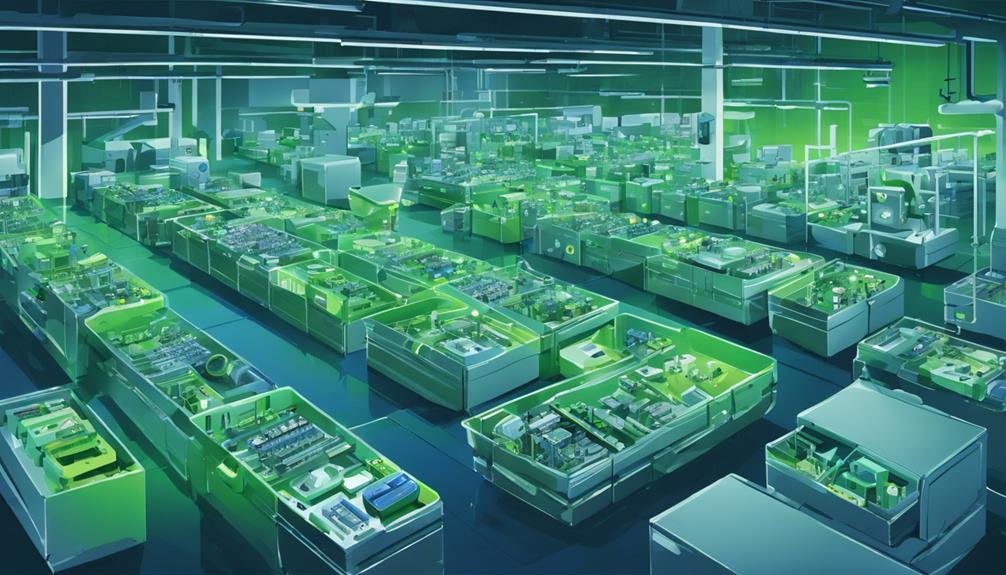
In the domain of cost-effective component sourcing, manufacturers can leverage various strategies to minimize expenses. By negotiating component prices, optimizing supply chains, and securing bulk order discounts, manufacturers can greatly reduce procurement costs.
These tactics enable companies to allocate resources more efficiently, ultimately contributing to the overall cost-effectiveness of surface mount assembly.
Component Price Negotiation
Most notably, the adoption of surface mount assembly enables manufacturers to capitalize on economies of scale, thereby facilitating more effective component price negotiation with suppliers. By leveraging the benefits of surface mount technology (SMT), manufacturers can secure better pricing for bulk purchases of SMT components. This is particularly important in the context of cost-effective component sourcing, where every dollar counts.
The advantages of surface mount assembly in component price negotiation can be summarized as follows:
- Reduced material costs due to the compact size of surface mount components
- Efficient use of PCB real estate, allowing for more components to be fitted in a smaller area
- Increased purchasing power through bulk orders, resulting in better pricing
- Improved supply chain management, enabling manufacturers to respond quickly to changes in demand
- Enhanced profitability through reduced production costs and competitive pricing for electronic products
Supply Chain Optimization
Surface mount assembly's inherent advantages in component sourcing enable manufacturers to orchestrate a more streamlined and cost-effective supply chain. By leveraging automation and commonality of parts, surface mount technology reduces component costs, thereby optimizing the supply chain. This, in turn, leads to reduced lead times and higher efficiency in manufacturing.
The cost-effective approach to component selection and procurement guarantees that manufacturers can achieve significant cost savings. Additionally, the use of surface mount technology enables manufacturers to streamline their supply chain, reducing production costs and enhancing overall efficiency. By optimizing the supply chain through SMT assembly, manufacturers can achieve higher efficiency, lower production costs, and improved profitability.
This optimized supply chain enables manufacturers to respond quickly to changing market demands, thereby gaining a competitive edge in the industry. By adopting surface mount assembly, manufacturers can realize the full potential of their supply chain, achieving unprecedented levels of efficiency and cost-effectiveness.
Bulk Order Discounts
By sourcing components in bulk, manufacturers can capitalize on significant cost savings, particularly in high-volume production runs, where suppliers often offer discounts for larger orders. This approach enables manufacturers to reduce their overall production expenses, making it a financially attractive option for those looking to scale their production.
The benefits of bulk ordering for surface mount assembly are numerous:
- Reduced per-unit costs through economies of scale
- Significant cost savings through supplier discounts
- Optimized supply chain through reduced procurement complexity
- Improved competitiveness in the market through reduced production expenses
- Maximized profitability through cost-effective component sourcing
Frequently Asked Questions
What Are the Benefits of Surface Mount Components?
Moreover, the benefits of surface mount components lie in their ability to provide higher component density on printed circuit boards (PCBs). They also offer improved electrical performance due to shorter signal paths, enhancing overall circuit efficiency.
Moreover, surface mount technology enables automated assembly, reducing manual labor costs. Moreover, they are cost-effective and easily sourced, making them a preferred choice in modern electronics manufacturing.
What Are the Benefits of Smd?
The benefits of SMD (Surface Mount Devices) lie in their compact design, allowing for increased component density and improved performance.
SMDs enable faster signal propagation, reduced electromagnetic interference, and lower power consumption. Additionally, they facilitate automated assembly, reducing production costs and increasing accessibility to advanced electronics.
These advantages make SMDs an essential component in modern electronics, driving innovation and efficiency in various industries.
What Are at Least Four Advantages of Surface Mount Technology Over Through-Hole Pin-In-Hole Technology?
As the electronics industry continues to evolve, the choice between surface mount technology (SMT) and through-hole pin-in-hole technology becomes increasingly important.
SMT holds a distinct advantage, boasting four significant benefits. To begin with, SMT enables higher component density on printed circuit boards, allowing for more efficient use of space.
Next, shorter signal paths in SMT improve electrical performance. Additionally, automated assembly processes make SMT more cost-effective and efficient.
Lastly, SMT enables the creation of smaller, lighter devices, revolutionizing the industry.
What Is the Function of Surface Mount Device?
The primary function of a surface mount device (SMD) is to facilitate the mounting of electronic components directly onto the surface of a printed circuit board (PCB).
SMDs enable efficient and compact electronic designs by increasing component density in a smaller space. This allows for improved functionality, stability, and peak performance in modern electronic devices, while also enabling the co-existence of through-hole components on the same PCB.

